Change to the furniture industry "will have to come from designers"
Young German designer Hanna Emelie Ernsting is producing her latest furniture collection herself following a "really tough" experience with a major brand, and has warned fellow designers to "watch out" for unfair contracts (+ interview).
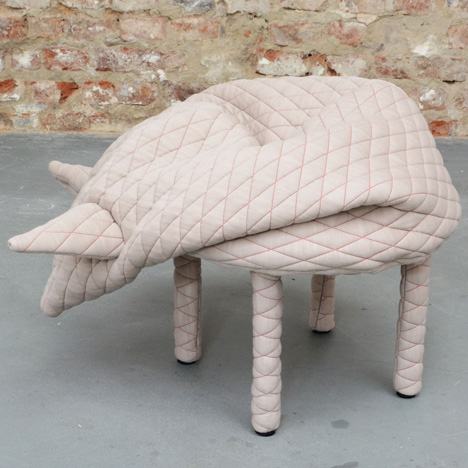
Ernsting has launched her range of Petstools under her own name, two years after signing a contract to manufacture her graduation projects with a brand that then failed to produce them. "I couldn't get out of the contract," she said. "So I couldn't use my designs even though they would not produce them."
Soon after graduation she was awarded second prize in the [D3] Contest for young designers at imm cologne 2013 for her Moody Couch, a sofa with a cover that's much larger than the structure underneath so it can be scrunched around the user. A few months later she signed a deal to produce it along with a similar armchair called the Moody Next and a loose cover to create the same effect with a standard chair called the Moody Bag.
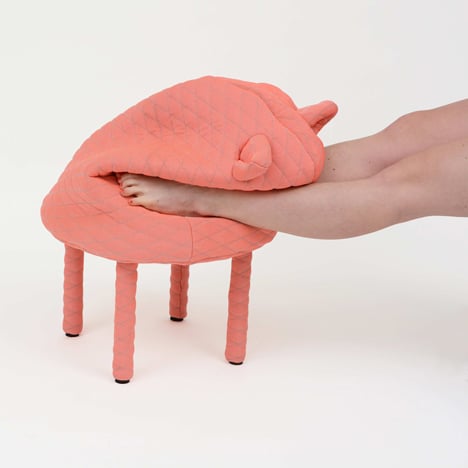
"I thought that was the start so I was actually really excited about it, but I sort of realised I would be super relieved when it's actually on the market," she told Dezeen. However, after a year of developing the design the company changed its strategy and dropped Ernsting's products.
"It was really tough and I was really angry as it was my diploma project - my beginning as a designer," she said. "It actually said in the contract if they decide to not go on with the project then the contract would be terminated, but then they said we might produce it sometime. So they backed out of that, which was not really fair."
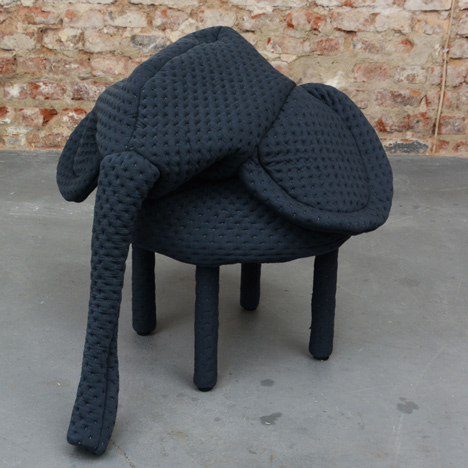
Speaking to Dezeen as the contract finally comes to a close, Ernsting cautioned new graduates to be careful what they sign up for in the excitement of beginning their careers. "Designers should really watch out for these contracts," she warned. "I would be careful about giving away the rights, even for two years. That can still be a very important two years."
She also recommended talking to other designers who have worked with companies to find out what experiences they had. "As long as you communicate with other designers, you know what to watch out for - I think that's really important."
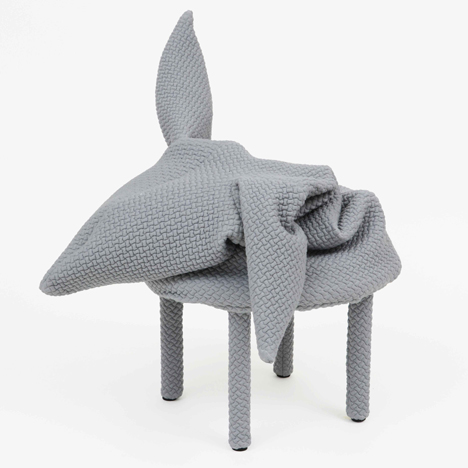
In addition, Ernsting noted that the royalty system where designers are paid according to how many of their products are sold "doesn't seem modern any more", echoing the sentiments of the #milanuncut debate that engaged dozens journalists and designers during Milan 2011 and exposed the poor royalties designers earn.
"It might have seemed a good idea 50 years ago, but a product will not be on the market for 50 years any more," she explained. "Companies change their products every year so you're not actually paid much for the work…. Right now some designers work for a producer for a year and are not paid anything."
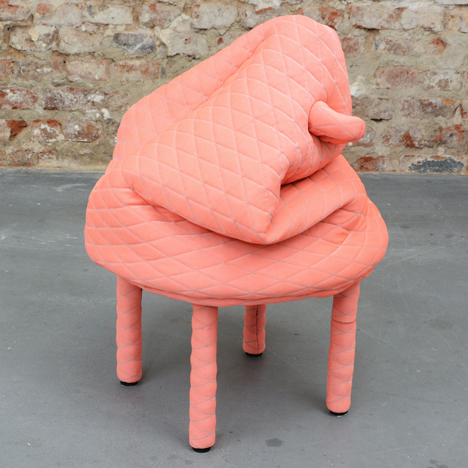
However, she points out that there's not much incentive for companies to change the way they remunerate designers for their work because there is so much competition amongst young graduates. "It's kind of tough to make them see why they should choose you and not some other young designer who is perhaps willing to go further with the deal," she explained. "I was willing at the beginning to go for that deal as I didn't realise what risks there could be. There are always going to be other designers who are going to work like that."
She therefore believes that in order for the situation to improve, "change would have to come from the designers." She advocates designers working together to put pressure on companies for better deals, rather than undercutting each other. "I think it's really important that designers talk to each other and that there's not this competition so much. In a way everybody has a different chance at a producer."
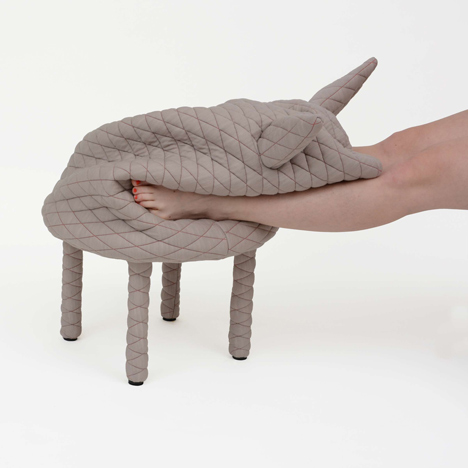
For now, she's taking production of the Petstools into her own hands. Like the three graduation projects, the footstools feature baggy covers for nestling into. In this case, each one is shaped like a different animal.
The base is MDF on metal legs, topped with the animal-shaped pillow containing expanded polystyrene beads. She has found a company to make them and is taking them to the market herself, having sold the initial batch quickly via her own website. "Designers who can't afford to have a shop or don't have [a retail] network yet pretty often do have a network with press," she notes. "That's definitely something you can use as a designer to bring your products out into the world."
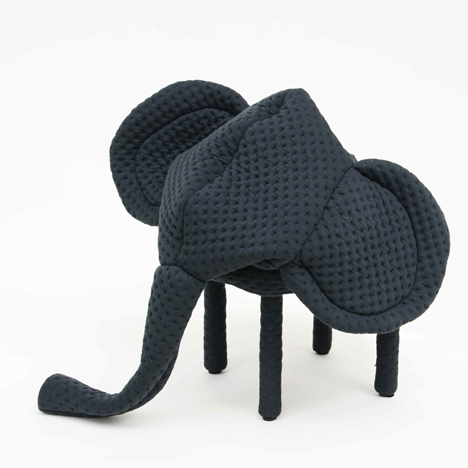
Although frustrated by the way her first relationship with a manufacturer turned out, Ernsting acknowledges that her experiences with a range of manufacturers so far gave her the knowledge and confidence to be able to take this step. "I learned so much from working with these producers - they're not all bad!" she said. "Coming straight from university, you don't know anything about what production costs could look like, or how shops work. Things like that scared me in the beginning. Perhaps it was good that I had these experiences because I have learnt a lot about how to approach business as a designer."
Meanwhile, the two-year contract for the Moody collection is now due to expire. Once she regains the rights, she will consider whether to produce those pieces under her own label as well or try to work out a new contract with a different company.
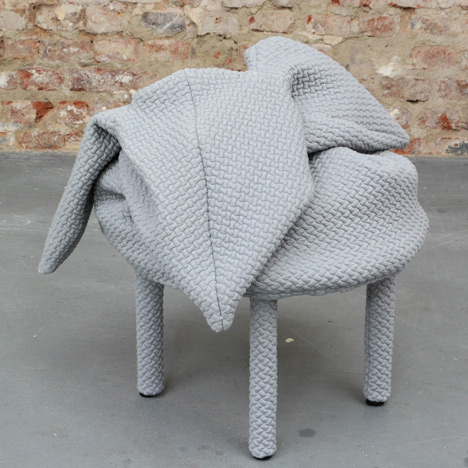
Hanna Emelie Ernsting's story is not unique and she's one of a number of young designers who have decided to produce selected designs under their own label in parallel with work for major brands. Notably British industrial designer Benjamin Hubert branched out last autumn by manufacturing a tent-like lamp made of underwear fabric in-house, alongside his prolific work for international design companies.
Designers' options for self-production are increasing further with the rise of crowdfunding platforms, like the recently launched Crowdyhouse, where designers are able to raise money upfront by inviting funding for products which investors eventually receive once they have been produced.
Here's a transcript of the interview with Hanna Emelie Ernsting:
Rose Etherington: What made you decide to produce the Petstools yourself?
Hanna Emelie Ernsting: I had some difficult experiences with some bigger producers. It started off quite interesting and nice; after a while I realised that most of the energy had to come from me and I had to keep motivating the company. Then [my work] still might get taken out of the portfolio. There's a lot of work to get the whole project going and a lot of things can go wrong.
Then I decided I could do it myself. I've learnt so much, [working with companies] is good training basically, and I decided perhaps I could give it a shot and try it myself. I've found a company to make them for me and I'm taking them to the market myself.
Rose Etherington: How do you get the products to the customers?
Hanna Emelie Ernsting: I think what's quite exciting about that is the internet. The products aren't even in the shops yet and I sold the first batch of them through my website. Designers who can't afford to have a shop or don't have [a retail] network yet pretty often do have a network with press. That's definitely something you can use as a designer to bring your products out into the world. Also in terms of the production the world is so connected now - you can just email somebody and they can start sending the textiles over and everything goes faster.
Rose Etherington: Tell me what happened with the Moody Couch.
Hanna Emelie Ernsting: I signed a contract with a company for all three of my diploma projects - the Moody Couch, Moody Nest and Moody Bag. It seemed really exciting and good, then after about half a year of developing it further, it turned out that the company had to change their whole strategy. They had a new CEO and everything was put on hold. After that, development of my products stopped.
But I couldn't get out of the contract, so I couldn't use my designs even though they would not produce them. [The contract is] actually going to stop pretty soon, it terminates after two years, so now I'm getting out of it.
Rose Etherington: How did you get involved with the company?
Hanna Emelie Ernsting: They actually came through my textile producer. They were a very interesting company who are very involved with what is happening and they also helped me a lot by handing me out some materials that they couldn't use any more so I could play around with it, then they helped me with the contact with the producers.
I thought that was the start so I was actually really excited about it. It was good of course, but I sort of realised I would be super relieved when it's actually on the market. There are so many steps that still have to be done before you really know how it's going to work out. I didn't realise a lot of things still had to be achieved.
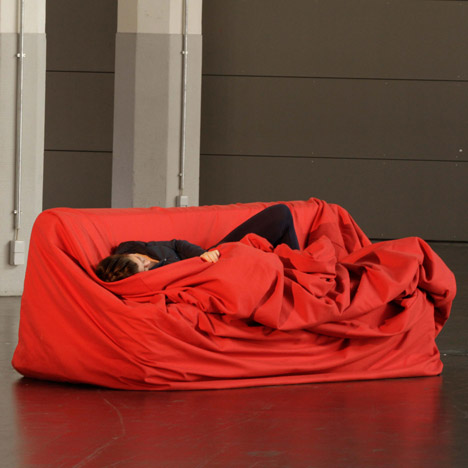
Rose Etherington: How do you feel about the fact that they decided not to use your piece but still wanted to stop you from going somewhere else?
Hanna Emelie Ernsting: It was really tough and I was really angry as it was my diploma project - my beginning as a designer. Also it actually said in the contract if they decide to not go on with the project then the contract would be terminated. But then we talked about it and they said we might produce it sometime. So they backed out of that, which was not really fair. So I was of course angry about that.
This contract is going to be over in November, so I am going to have a new chance of finding a new producer, or perhaps I will find out that it is just a difficult as couple of years ago!
Rose Etherington: Would you consider producing the Moody Couch yourself?
Hanna Emelie Ernsting: I am definitely going to consider it. I think it's different with a big piece of furniture like the couch. For some bigger pieces of furniture, it would be good to put it in stores, because with a couch you want to sit on it [before you order it]. I am not quite sure about that but I am definitely going to think about it.
Rose Etherington: Are you able to say which company it is that you had the contract with?
Hanna Emelie Ernsting: I would rather not. I don't want to give the impression that I don't want to work with producers any more - it's not an idea that I want to give up. If I say the name then producers may not want to work with me.
Rose Etherington: So you would get involved in that relationship again? What would you change about it?
Hanna Emelie Ernsting: I still would consider the way of being paid only once the product is on the market. It doesn't seem modern any more, though. It might have seemed a good idea 50 years ago, but a product will not be on the market for 50 years any more. Companies change their products every year so you're not actually paid much for the work. So I would probably try to change that. Also, I would be careful about giving away the rights, even for two years. That can still be a very important two years.
Rose Etherington: Have you found that companies are open to the idea of changing the royalties system?
Hanna Emelie Ernsting: I don't think its that easy yet, because there are so many other designers, especially when you're a young designer, it's kind of tough to make them see why they should choose you and not some other young designer who is perhaps willing to go further with the deal.
I was willing at the beginning to go for that deal as I didn't realise what risks there could be. There are always going to be other designers who are going to work like that. I can imagine that it would be hard to talk to the producers about changing this contract but I would try.
Designers should really watch out for these contracts and they should also try to communicate more with each other. I think the designers should agree on a certain way of payment then producers would slowly have to warm up to that idea. It would have to come from the designers. Right now some designers work for a producer for a year and are not paid anything.
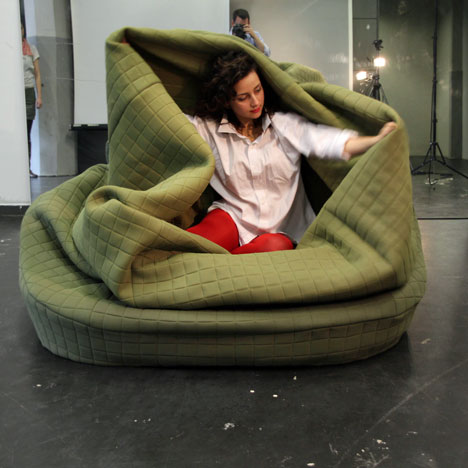
Rose Etherington: What would your advice be to new graduates who have projects taken up by companies?
Hanna Emelie Ernsting: Talk to other designers about their experiences. If they know somebody who worked with this company, what experiences did they have? I think it's really important that designers talk to each other and that there's not this competition so much. In a way everybody has a different chance at a producer, so it could be that it doesn't work out for one person and does for another. As long as you communicate with the designers, you know what to watch out for - I think that's really important.
Rose Etherington: Would you advise graduate designers to start making their own products?
Hanna Emelie Ernsting: Coming straight from university, you don't know anything about what production costs could look like, or how shops work. Things like that scared me in the beginning. Perhaps it was good that I had these experiences because I have learnt a lot about how to approach business as a designer.
I learned so much from working with these producers - they're not all bad! I realised what to watch out for and how to approach producing something. I can't really say that anyone once they come out of university should produce their own things. For me, I needed some time to understand how these things work and not to actually fear this scenario of producing your own product.
You have a big unknown territory in the beginning. But I decided that if I worked so much to get this product onto the market, perhaps I can even do this myself. It's more than a design job that I've been doing with these producers. It's also thinking about the price or what kind of people will use it, marketing knowledge flows into it, how to motivate the producers or the people you work with. You always have to be really encouraging and make them believe that the product you've designed is super special, then you have to convince the producers and they again have to use that to motivate shops and the buyer. I can use that knowledge for my own business.